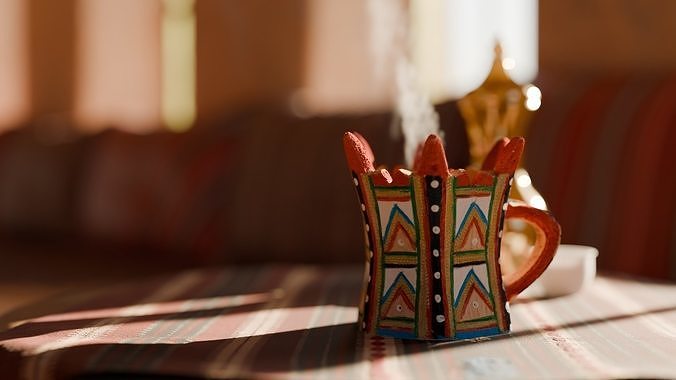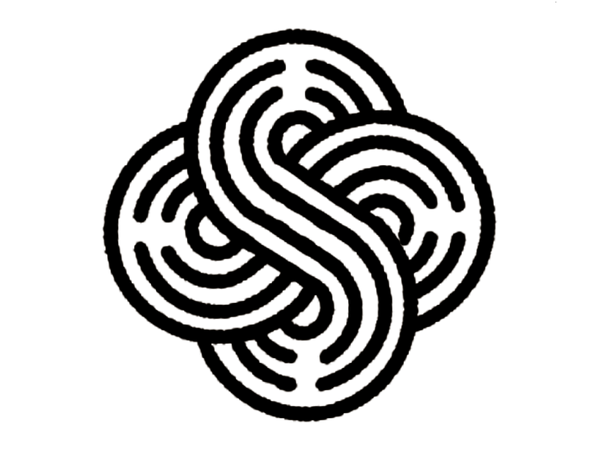
The Traditional Omani Incense Cauldron: Symbolism, Heritage, and Historical Significance
Awaken To The OneShare
The Traditional Omani Incense Cauldron: Meaning, Symbolism, and Historical Significance
Oman is a country deeply rooted in tradition and culture, and among its many symbols of heritage, the traditional incense cauldron holds a special place. Known as the "mabkhara", this iconic vessel is far more than a simple container for burning frankincense or other aromatic materials; it is a profound cultural emblem that connects Omanis to their history, spirituality, and way of life. This blog delves into the meaning, symbolism, and historical significance of the Omani incense cauldron.
The Meaning of the Omani Incense Cauldron
At its core, the Omani incense cauldron, or mabkhara, is a tool for burning incense, particularly frankincense, which Oman has been renowned for since antiquity. Frankincense, a resin derived from the Boswellia tree, is a treasure of Oman’s Dhofar region. The mabkhara serves as the medium through which this resin is transformed into fragrant smoke, a process imbued with rich layers of meaning.
- Spiritual Cleansing: Burning incense is believed to purify the air and ward off negative energy, making the mabkhara an essential part of religious and spiritual practices.
- Hospitality: In Omani culture, offering incense to guests is a gesture of warmth and generosity. The mabkhara plays a central role in welcoming visitors and creating an atmosphere of comfort and respect.
- Celebration: The mabkhara is often used during weddings, Eid celebrations, and other special occasions to signify joy, blessings, and communal harmony.
The Omani mabkhara, therefore, is not merely a vessel but a bridge connecting daily life to the sacred, the personal to the communal, and the present to the past.
Symbolism of the Omani Incense Cauldron
The mabkhara holds rich symbolic value that transcends its functional purpose. Its design, materials, and use convey cultural and spiritual meanings:
- Connection to Heritage: Often handcrafted from ceramic, brass, or silver, the mabkhara’s traditional designs reflect Oman’s artistic legacy. Patterns and motifs etched into the cauldron often draw from Islamic art, showcasing intricate geometric shapes and floral designs.
- Sacred Fragrance: The smoke produced by the mabkhara symbolizes a connection to the divine. Rising into the air, it is seen as a metaphor for prayers and blessings ascending to the heavens.
- Continuity and Tradition: The act of lighting incense in a mabkhara is a ritual passed down through generations. It symbolizes continuity, as younger Omanis learn this practice from their elders, preserving their cultural identity.
Additionally, the mabkhara itself, with its elegant and sturdy structure, represents balance—a balance between form and function, tradition and modernity, the spiritual and the worldly.
Historical Significance of the Omani Incense Cauldron
The history of the mabkhara is closely tied to Oman’s role as a global hub for the frankincense trade. Let’s explore its historical roots and how it has evolved over time:
-
Ancient Frankincense Trade:
- Oman’s Dhofar region has been the heart of the frankincense trade for thousands of years. The ancient Incense Road, a network of trade routes, linked Oman to Mesopotamia, Egypt, Rome, and India. Frankincense was a prized commodity used for religious rituals, medicinal purposes, and perfumery.
- The mabkhara became an essential tool for burning this precious resin, allowing its aroma to be appreciated in homes, temples, and marketplaces.
-
Cultural Diffusion:
- As Omani traders traveled the world, they carried the mabkhara with them, introducing its use and design to other cultures. The vessel became a symbol of Omani craftsmanship and hospitality, leaving a lasting impression on regions from East Africa to Southeast Asia.
-
Evolution of Design:
- While the traditional mabkhara remains a staple in Omani households, its design has evolved over centuries. Early mabkhara were simple clay vessels, but as Oman’s artisans refined their techniques, more elaborate versions emerged, featuring detailed metalwork, precious stones, and symbolic engravings.
-
Role in Religious Practices:
- The mabkhara has long been associated with religious rituals, both Islamic and pre-Islamic. In mosques, it is used to burn incense that perfumes the space, creating a serene atmosphere for prayer. In pre-Islamic times, it was used in sacred ceremonies dedicated to deities and ancestors.
The Mabkhara in Modern Omani Culture
Despite modernization, the mabkhara remains a cherished part of Omani culture. Its use continues to thrive in both traditional and contemporary contexts:
- Daily Life: Many Omani households use the mabkhara daily to burn frankincense or bukhoor (a blend of wood chips and aromatic oils). This practice not only freshens the air but also reinforces a sense of cultural pride and identity.
- Ceremonial Use: The mabkhara is indispensable during weddings, where it is passed among guests as a blessing. It is also a key feature of national celebrations, symbolizing unity and heritage.
- Art and Craft: Modern artisans have reimagined the mabkhara as a decorative object, blending traditional craftsmanship with contemporary aesthetics. These pieces are popular among tourists and collectors, serving as a tangible link to Oman’s rich heritage.
- Global Recognition: The mabkhara has become a cultural ambassador for Oman. Its image often appears in art, branding, and tourism campaigns, highlighting the country’s history and traditions.
Conclusion
The traditional Omani incense cauldron, or mabkhara, is far more than a utilitarian object; it is a vessel of culture, history, and spirituality. Its role in Omani society spans millennia, from its roots in the ancient frankincense trade to its enduring presence in modern households and ceremonies. The mabkhara embodies the values of hospitality, spirituality, and continuity, making it a powerful symbol of Oman’s identity. As Oman continues to embrace its heritage while looking to the future, the mabkhara remains a timeless icon of the nation’s soul.
